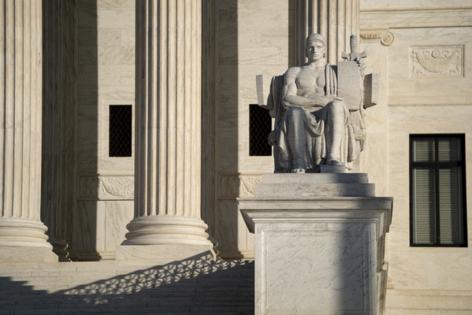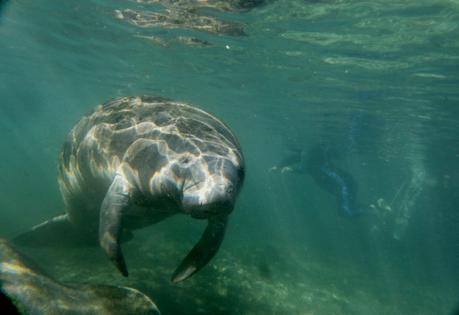
By Jessica Hill Las Vegas Review-Journal
December 3, 2023 -
At least six Nevada legislators who own rental properties voted against bills affecting rentals — from capping rent increases for seniors to increasing transparency on rental leases — prompting concerns about special interests’ influence on government.
The four different pieces of legislation passed the Democratic majority Legislature along mostly party lines, although they were ultimately vetoed by Republican Gov. Joe Lombardo, who later received criticism for rejecting the bills related to tenants rights and eviction reform.
Democrats say the legislation would have eased the Silver State’s affordable housing shortage, curbed eviction rates and increased transparency in rental agreements, while Republican legislators — some of whom were landlords themselves — argue the bills would have stymied the development of affordable housing units and created onerous burdens on landlords.
Political science and housing policy experts, however, called into question the conflict of landlords voting on legislation relating to rentals.
Nevada’s citizen legislature is made up of legislators who either have jobs that allow them to step away for six months every other year or are retired, said Ben Iness, coalition coordinator for the Nevada Housing Justice Alliance.
Many legislators are real estate agents, landlords or others involved in the housing industry, he said.
“What that means is that when we get these really promising, exciting, urgent and crucial tenant protection bills, that there’s this conflict of interest where they just kind of hit these walls,” Iness said. “It’s a weird conflict and dynamic.”
Fred Lokken, a political science professor at Truckee Meadows Community College, thinks it is a conflict of interest for legislators who own rental properties to then vote on legislation regarding rentals.
While legislators did not violate the state’s ethics policies, which Lokken said are not the most stringent, the best practice would be for legislators to recuse themselves, he said.
“It looks like they have something to lose if they approve the legislation,” Lokken said.
Legislators who own rental properties and voted against the bills say they properly disclosed their rentals with the secretary of state. They also say it was not a conflict of interest to vote on the bills because they would not have been impacted differently than any other person owning rentals.
Sen. Jeff Stone, R-Henderson, who owns Stone Premier Properties with his wife and has nearly 80 units, according to his financial disclosure, said a conflict of interest arises if a legislator votes for something that has a direct nexus to their profitability without affecting other people in their profession.
If he were to vote against rent control, he is not looking out just for himself, he said. Rather, “it applies to every landlord in the state of Nevada.”
Fixing Nevada’s housing crisis
A shortage of affordable housing continues to plague the Silver State. Las Vegas households must make at least $113,186 annually to afford a mortgage, according to Redfin, an online real estate brokerage, while the average annual household income is around $86,000.
To afford a fair market rent on a two-bedroom apartment that rents for $1,455, Nevadans must make nearly $30 an hour, according to a study from the National Low Income Housing Coalition, while the average hourly rate in Las Vegas is $17.89, according to ZipRecruiter.
The four bills — Senate Bill 335, Assembly Bill 218, Assembly Bill 340 and Assembly Bill 298 — aimed to curb evictions and provide tenants with more rights and transparency.
Senate Bill 335 would have continued an eviction prevention measure that temporarily delayed summary evictions for up to 60 days for people with pending applications for rental assistance. Since that bill was vetoed in June, more than 30,000 Nevadans have been evicted, according to the National Housing Justice Alliance.
Assembly Bill 218 would have prohibited a landlord from charging a tenant an amount that exceeded the amount of rent under the written rental agreement and would have required a landlord to provide a tenant with at least one method to pay rent that did not require a fee. It also would have allowed a tenant to bring civil action against a landlord if they charged more than the agreed amount in a lease.
Assembly Bill 340 would have established a new summary eviction procedure for tenants by putting the onus on the landlords rather than the tenant to initiate the eviction process, Iness said.
Assembly Bill 298 would have capped rent increases to no more than 10 percent for people 62 or older or those who rely on Social Security. It also would have required a landlord who collects an application fee from a prospective tenant to refund it if the landlord gave the unit to someone else or did not conduct the activity for which the fee was collected, such as a background check. The bill also would have required a rental agreement to include explanations of each fee charged during a rental term.
A couple of Republican legislators owning rental property crossed party lines to vote yes on that bill, although it was ultimately vetoed by Lombardo.
Legislators’ responses
According to their most recent financial disclosures from the beginning of 2023, there are nine Republican legislators who either own rental properties or whose spouses do: Stone, Heidi Kasama, Gregory Koenig, Rich DeLong, Melissa Hardy, Danielle Gallant, Carrie Buck, Alexis Hansen and Ira Hansen.
There are also 11 Democrats who either own rental properties or their spouses do, according to their financial disclosure statements: Lesley Cohen, Reuben D’Silva, Sandra Jauregui, Cameron “C.H.” Miller, Erica Mosca, Richard “Skip” Daly, Edgar Flores, Max Carter II, Sabra Smith Newby and Angie Taylor. Most Democrats, however, voted for the legislation.
Stone said he and his wife are compassionate landlords who do not take advantage of their tenants. They have had to raise rents to cover the rising property taxes and insurance rates, but the increases have been between 4 and 5 percent. He has also never evicted any of his tenants, he said.
Sen. Buck, R-Henderson, said her husband rents a three-bedroom home to a family who have been there for 12 years without any rent increases. Because of the singular nature of the property and its limited assessed value, the property did not meet the threshold to be considered a conflict of interest, she said.
Buck said she carefully considered the housing bills’ potential impact on Nevadans.
“Nevada is facing a housing crisis,” Buck said in an email to the Review-Journal. “The legislation I voted against, along with my Republican colleagues, would have increased rents and put homeowners further out of reach.”
Assemblywoman Alexis Hansen, R-Sparks, said she and Ira Hansen own their grandparents’ home and the building in which their plumbing business is located. Since her first session in 2019, she has made known her experience facing eviction as a child and owning a home and rental property as an adult.
“I am fully aware and lived the difficulties of maintaining stable housing while growing up,” she said in an email. “My votes reflect my difference of opinion on what the solutions or reasons for housing instability might be.”
Assemblyman DeLong said he owns two rental properties in Nevada, one commercial and another residential. He said all four of the bills went through committees he did not serve on, and when the bills came to the floor, he viewed them as he did all other bills by asking if they established good policy for Nevada. None of the bills directly affected his rental property business, he said.
Legislators Hardy and Koenig also apparently own rental properties, according to their most recent disclosures, however they are located outside of Nevada, so therefore would not have been impacted by the proposed legislation.
Sen. Daly, who owns one rental where his father-in-law lives in Sparks, went against his party and opposed Senate Bill 335 because he felt it was too one-sided and went too much against the landlord, he said. He voted for the other housing bills because he felt they were fair and did not create much of a burden on a landlord.
Daly said all the legislators he has encountered in both parties and both houses take disclosures seriously.
“I don’t see people try to make legislation favor themselves,” Daly said. “If they were trying to, it would be apparent and they’d be called on it. … I don’t think we should go mining for perceived missteps that don’t exist.”
The governor’s role
The Nevada State Democratic Party accused Lombardo of favoring developers who funded his gubernatorial campaign over the best interests of Nevadans by vetoing the legislation.
“It’s despicable that in the middle of an affordable housing shortage, Lombardo and legislative Republicans denied Nevadans relief from skyrocketing housing costs so that many of them could reap the financial benefits,” party spokesperson Stephanie Justice said in a statement.
Lokken, the political science professor, echoed those concerns and said this is reflective of too much influence from private interests — from mining to gaming to developers — in state government.
In response, Lombardo’s office referred the Review-Journal to his veto messages, where Lombardo took issue with the bills because they placed onerous burdens on Nevada’s residential rental markets and created additional hurdles for landlords.
“Not only would this make the eviction process more time consuming, it would also make it more costly — potentially worsening availability and accessibility to residential properties for those looking to rent,” Lombardo said of Senate Bill 335. “Since this bill would not serve to improve the landscape of Nevada’s residential renting market, I cannot support it.”
The impact
Nicholas Irwin, an assistant professor of economics and real estate at UNLV, said each of the bills would potentially have had different impacts on either the demand side — renters — or the supply side — landlords.
“Anytime the government gets involved with the market, especially a market like housing which is a pretty competitive market, it can have the potential to create efficiencies in the market,” he said.
Delaying evictions would have constrained the supply in the marketplace, Irwin said. Having some housing units tied up in an eviction process limits the market and creates a shortage, he said. Putting rent caps in place causes developers to limit the number of units in general, Irwin said. It can also lead to a person living in a house they otherwise may not be able to afford, he said.
Assembly Bill 340 would have clarified the eviction process and Irwin does not think it would have made a big impact on the housing market, he said.
Irwin said Assembly Bill 218 would have just provided more information to renters and made them aware of extra fees.
“If people are fully informed at the beginning, that just eliminates some of the inefficiencies in the market,” he said.
Irwin thinks some of the best solutions to address housing instability is providing incentives for developers to build affordable housing through tax breaks.
Contact Jessica Hill at jehill@reviewjournal.com. Follow @jess_hillyeah on X.















